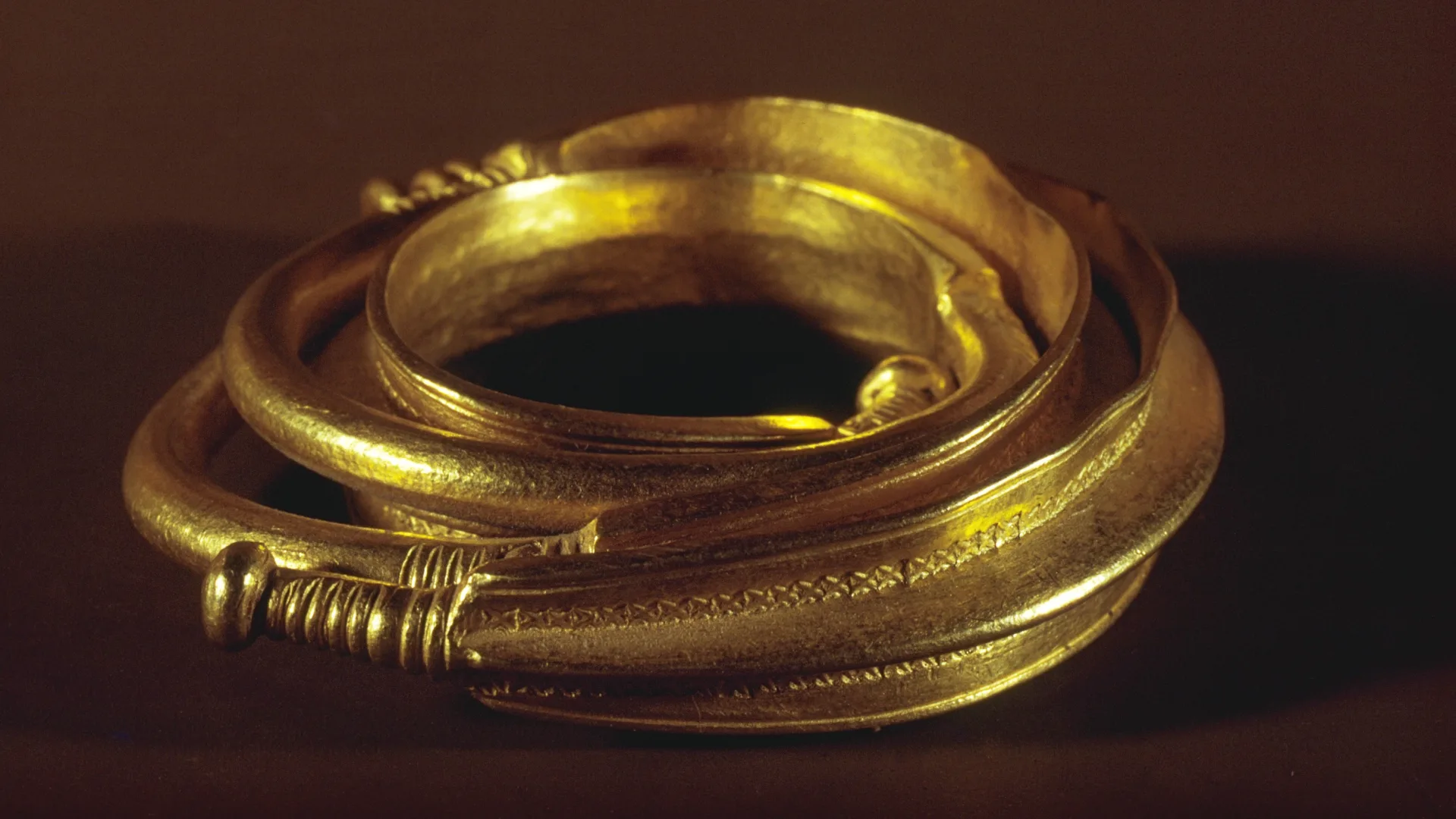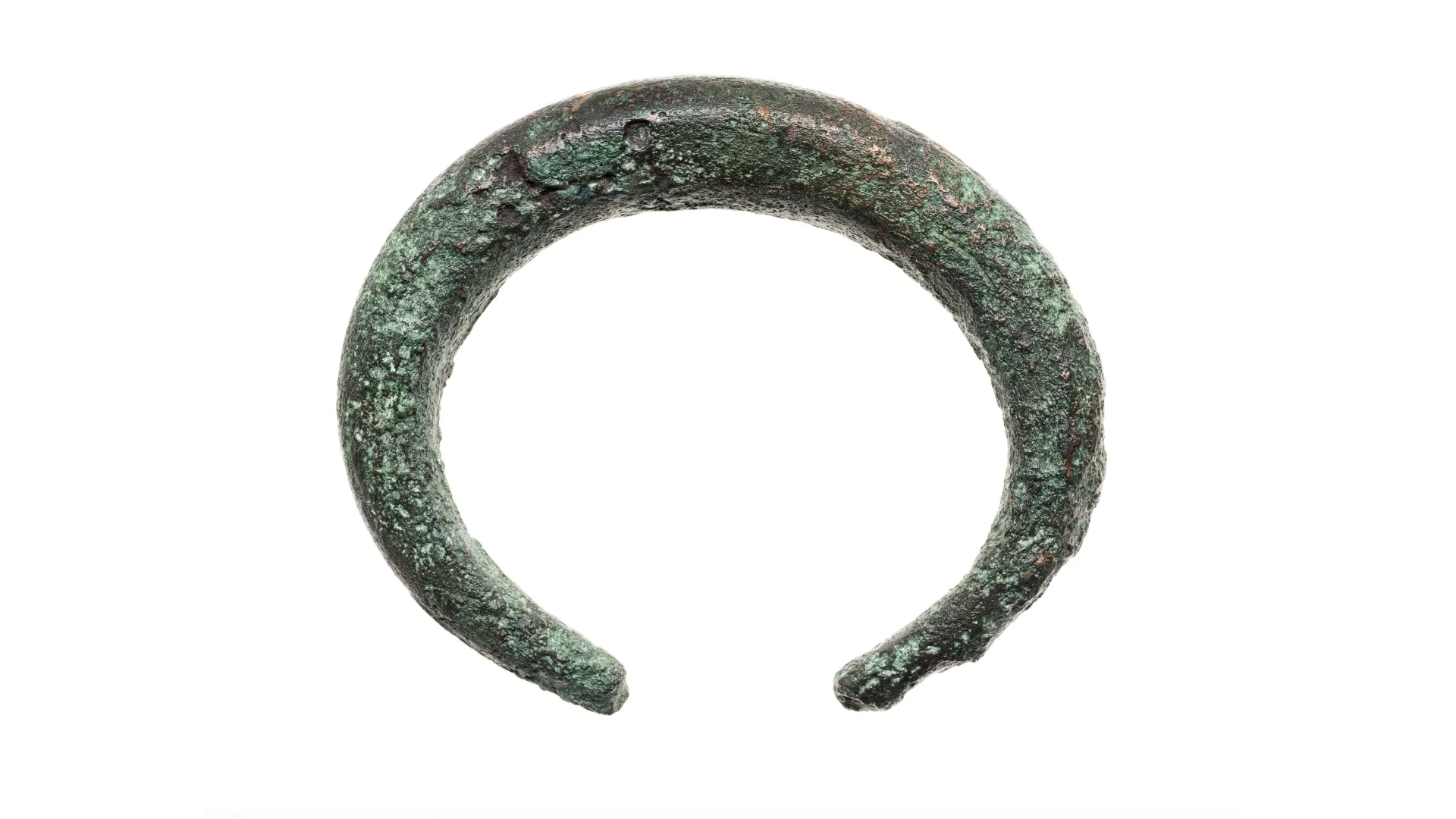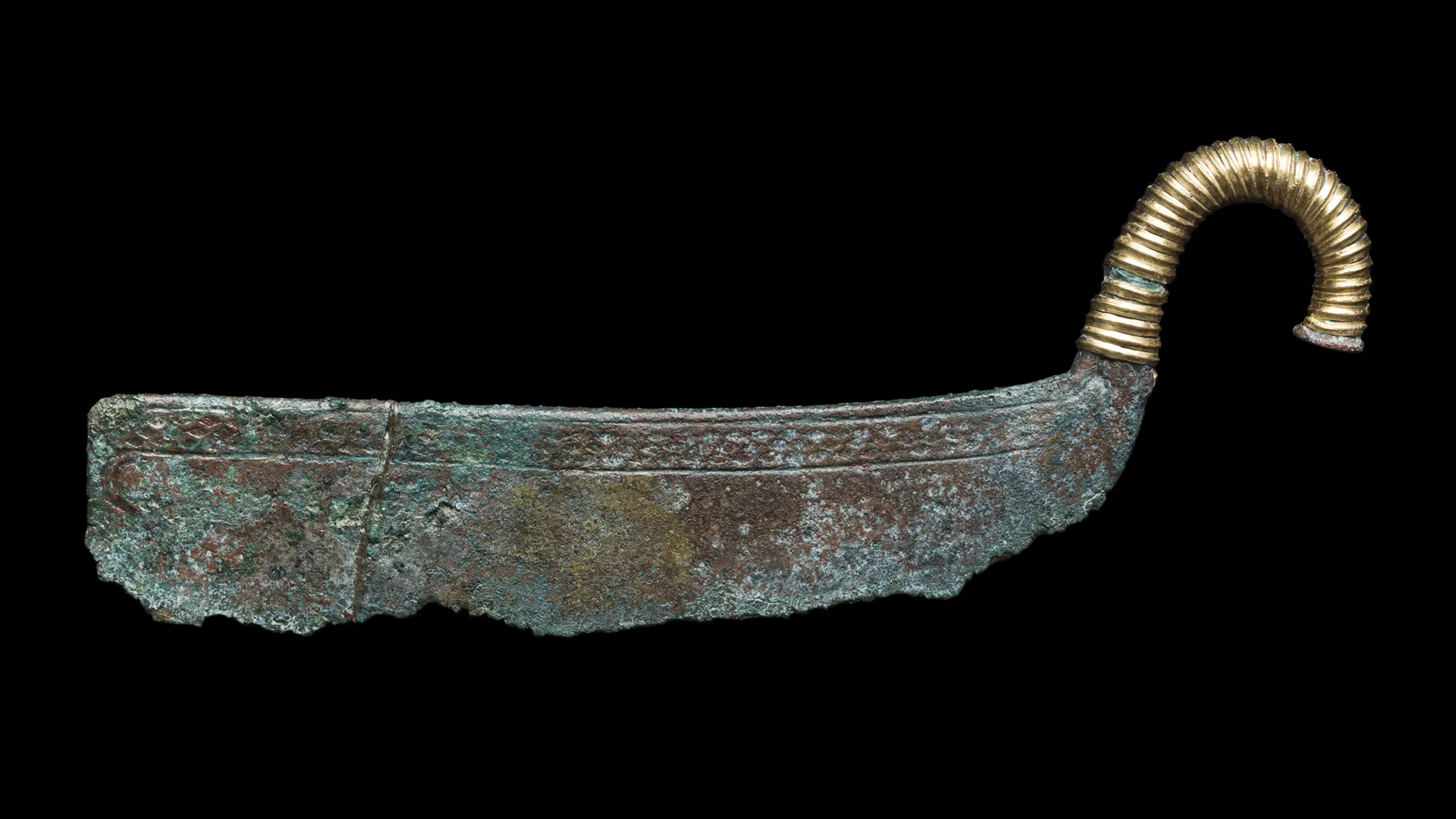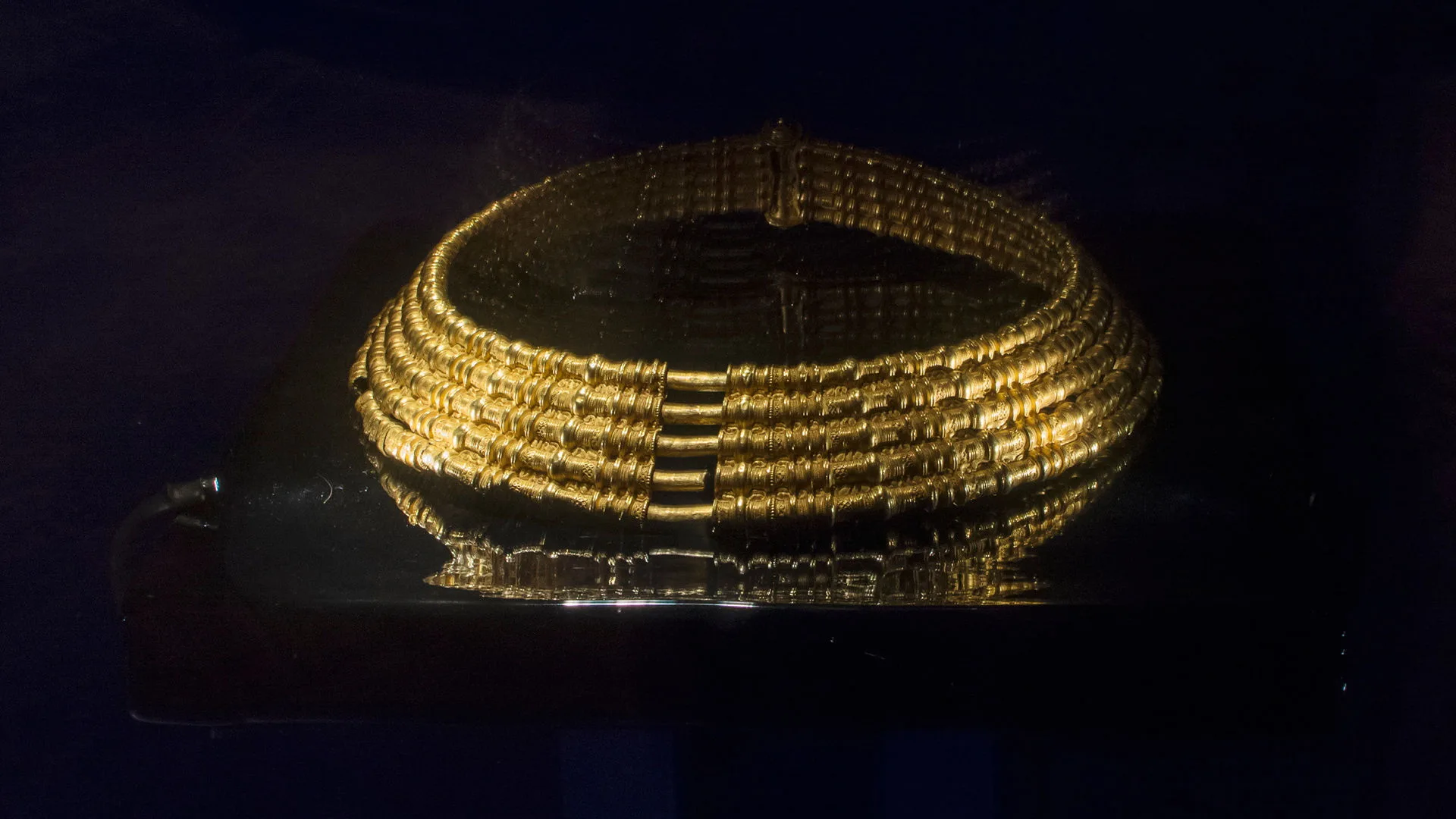The gold of Skedemosse
Stone Age
12,000 BC – 1700 BC
Bronze Age
1700 BC – 500 BC
Iron Age
500 BC – AD 1100

Skedemosse was one of the most important sacrificial sites on the island of Öland during the Iron Age. Here, the inhabitants of Öland would gather in the island’s centre to hold feasts involving sacrifices, as well as horse races. One interpretation of the name "Skede" is that it derives from skeið, an old word referring either to horse races or the occasion when herds of horses were separated. Skedemosse was used over long periods for both war-related sacrifices and peaceful offerings to the gods.

Gold hoard
On view at Historiska museet in the exhibition Guldrummet
The drained bog at Skedemosse was excavated in stages between 1959 and 1964. Much of the iron found was in poor condition, but the discoveries nevertheless provide a fascinating, if sombre, glimpse into the Iron Age.
The overgrown lake or bog was used as a site for sacrificing at least 40 people and 100 horses, spanning from the Pre-Roman Iron Age (500–1 BC) through to the late Viking Age (AD 800–1100). Sacrifices included not only men but also women and children. Animal offerings, such as cattle, pigs and sheep, were also made.
Between AD 200 and 400, the bog was used to deposit spoils of war, including broken weapons and parts of horse equipment. Most of the offerings were spears, likely gathered from a battlefield, but at least 44 swords, several shields and arrowheads were also placed in the bog. These were probably the weapons of fallen warriors, sacrificed in a manner reminiscent of what Caesar described in ancient Gaul.
Among the most striking finds from this period are seven large, twisted serpent-headed rings and two gold finger rings. Altogether, over 1.3 kilograms of gold have been recovered from the drained bog.
On several occasions, newly made or unused serpent rings coiled into spirals were laid down as offerings. Ten Roman silver coins (denarii) were also found during the excavations.





